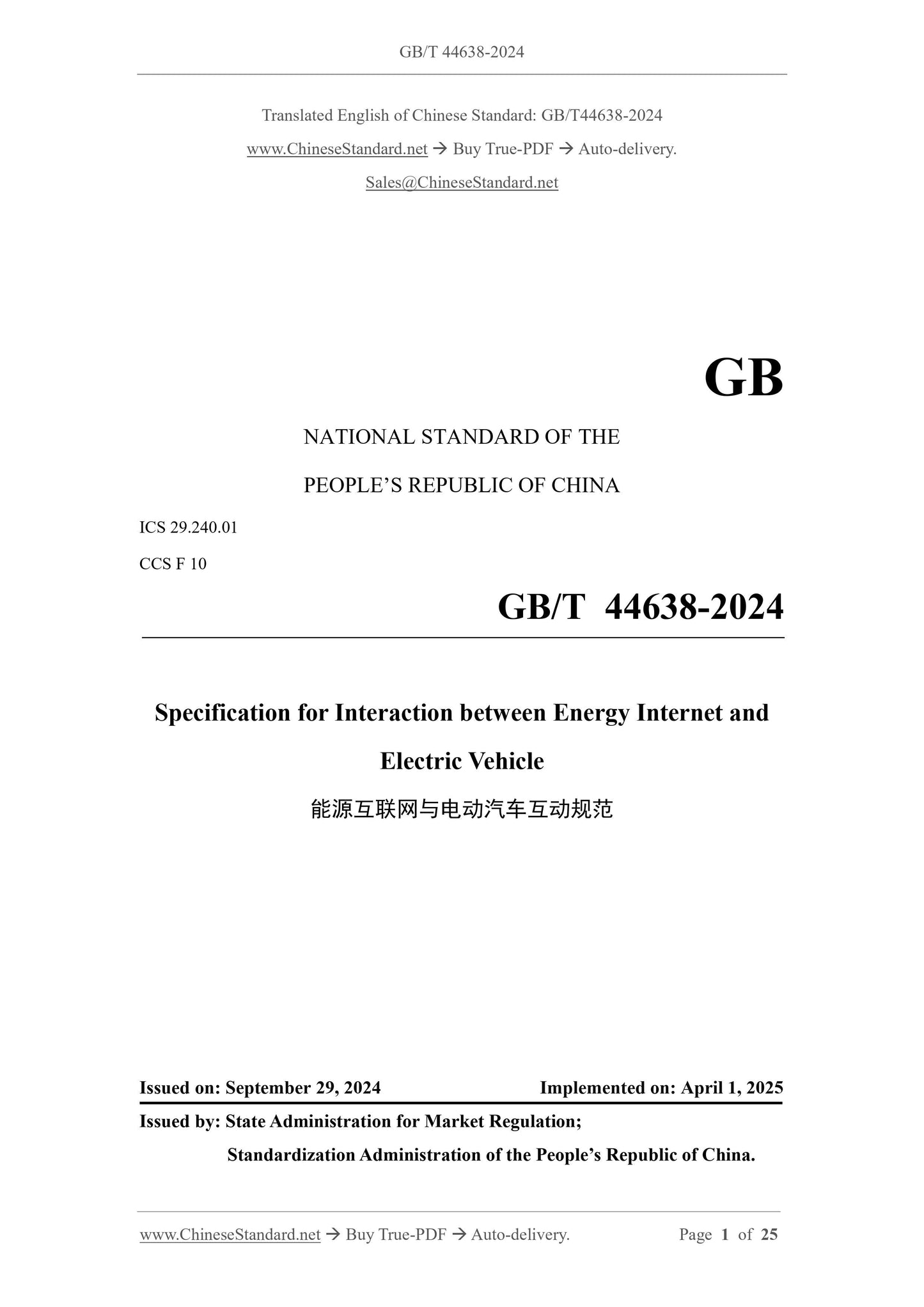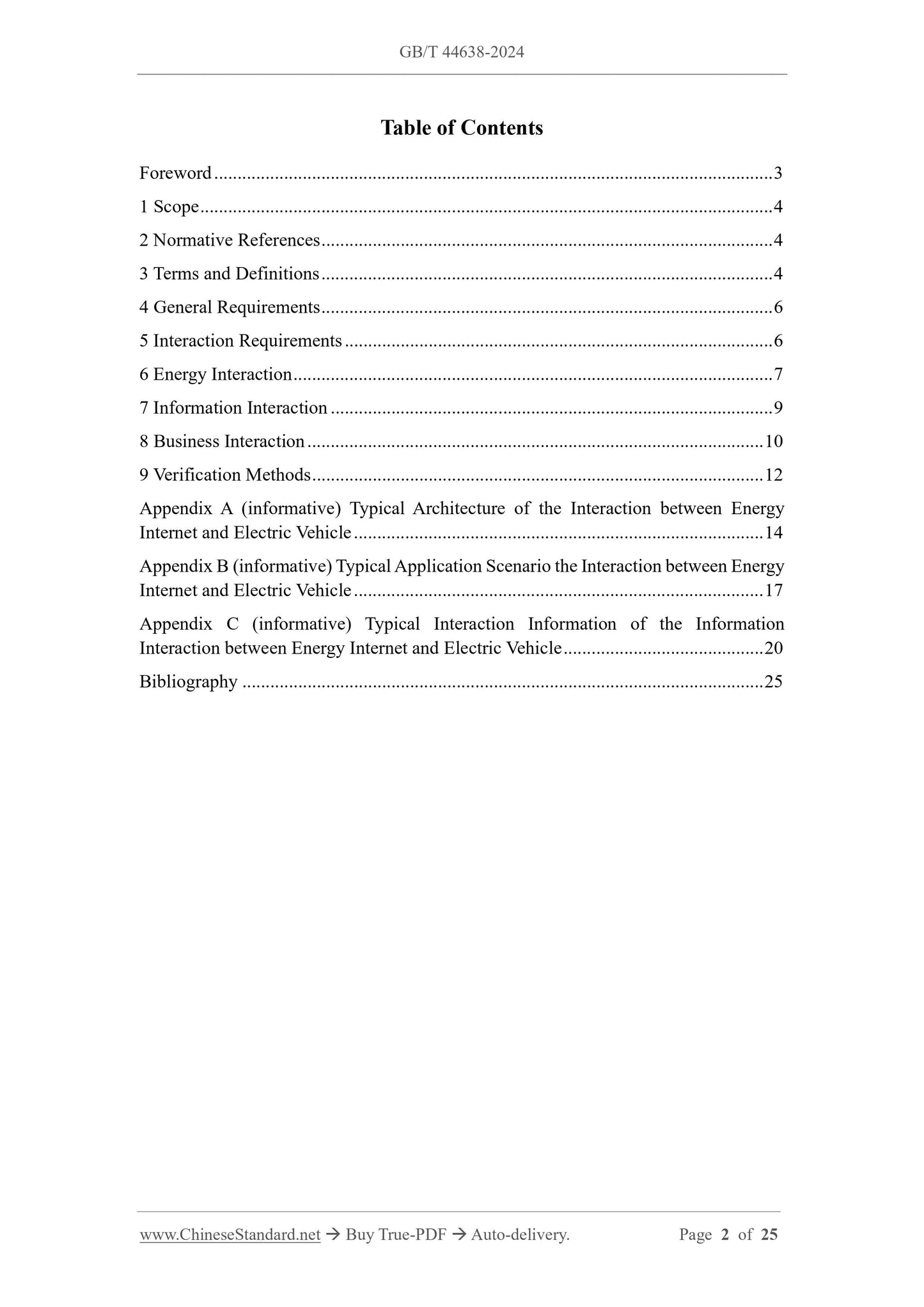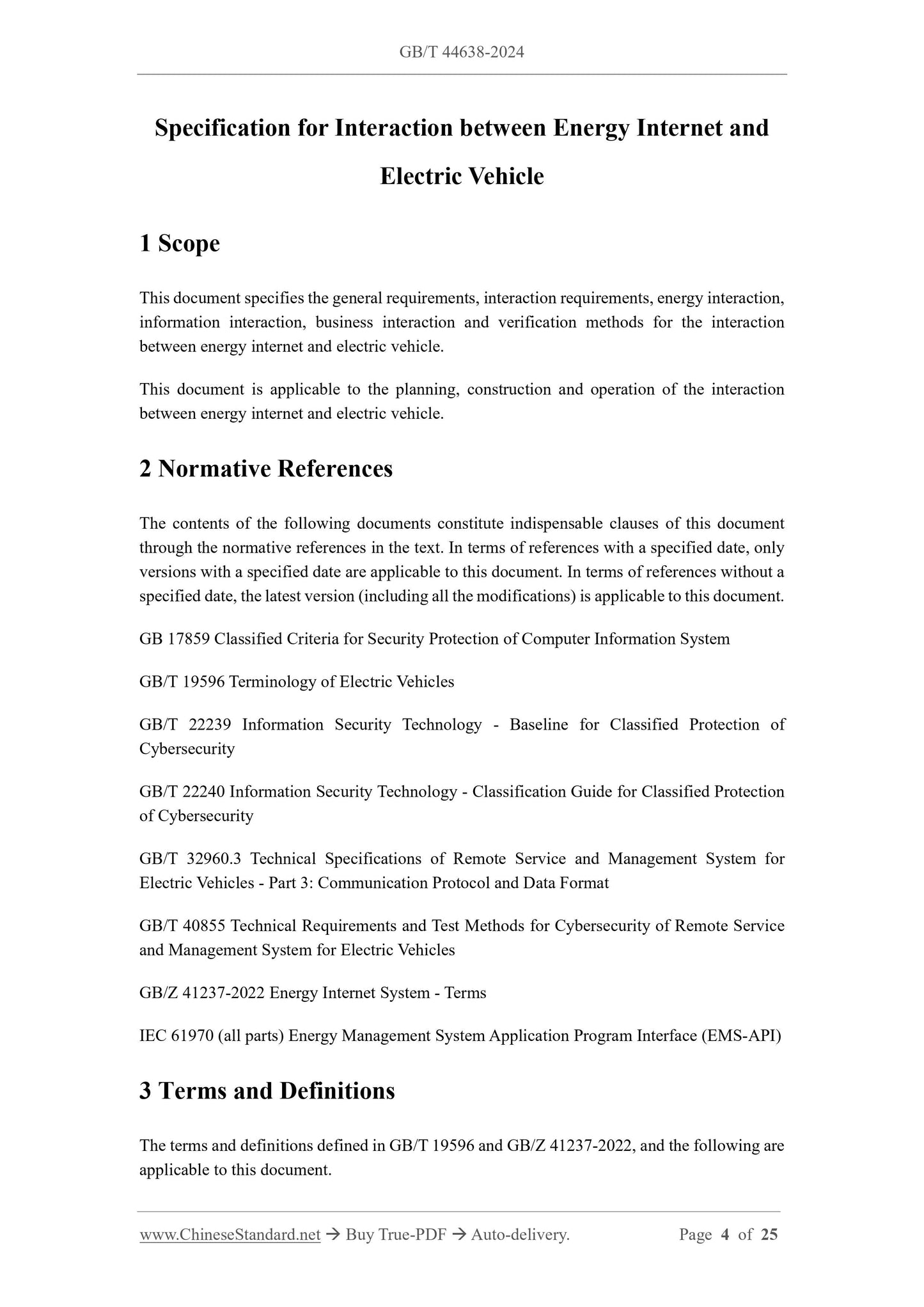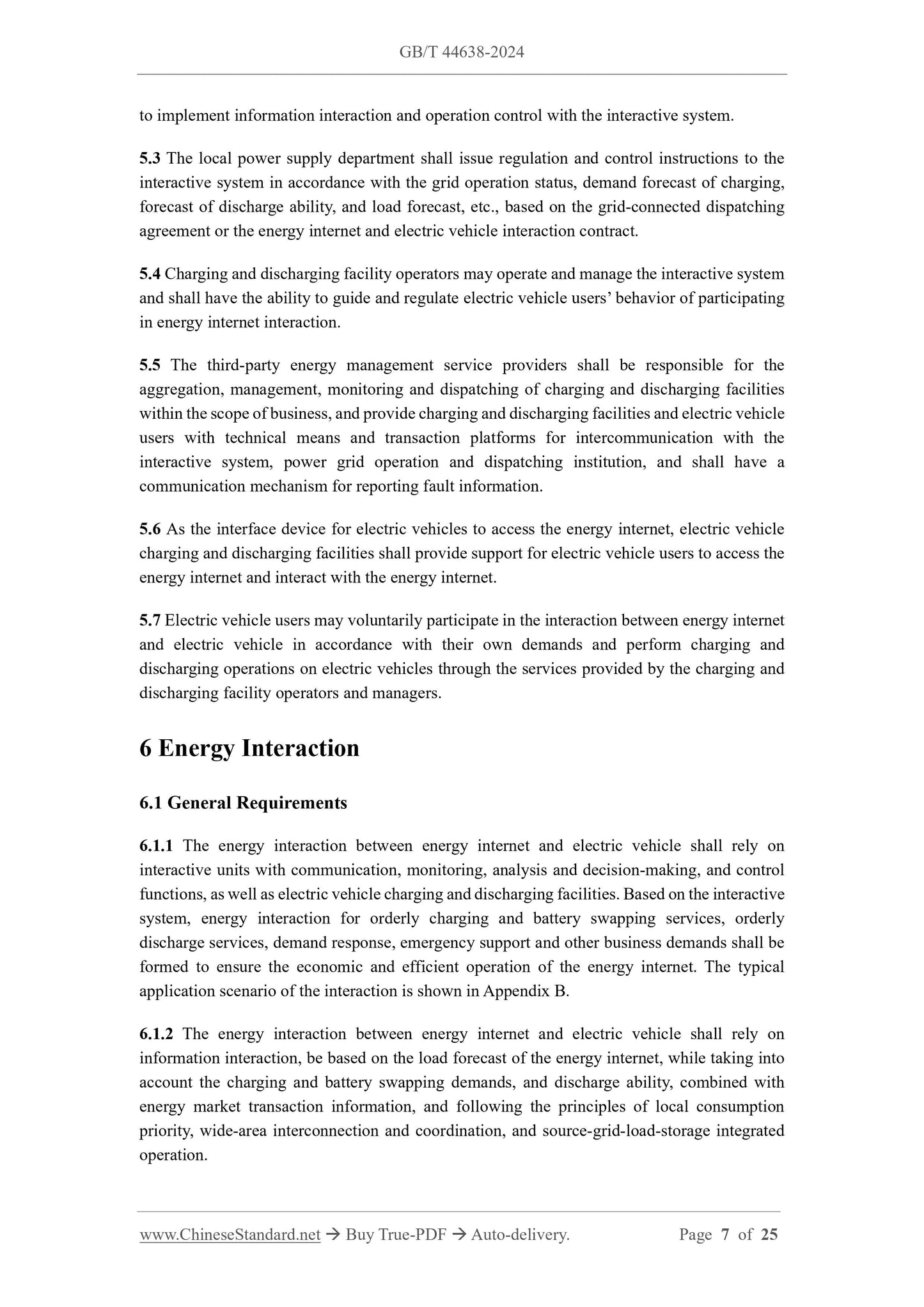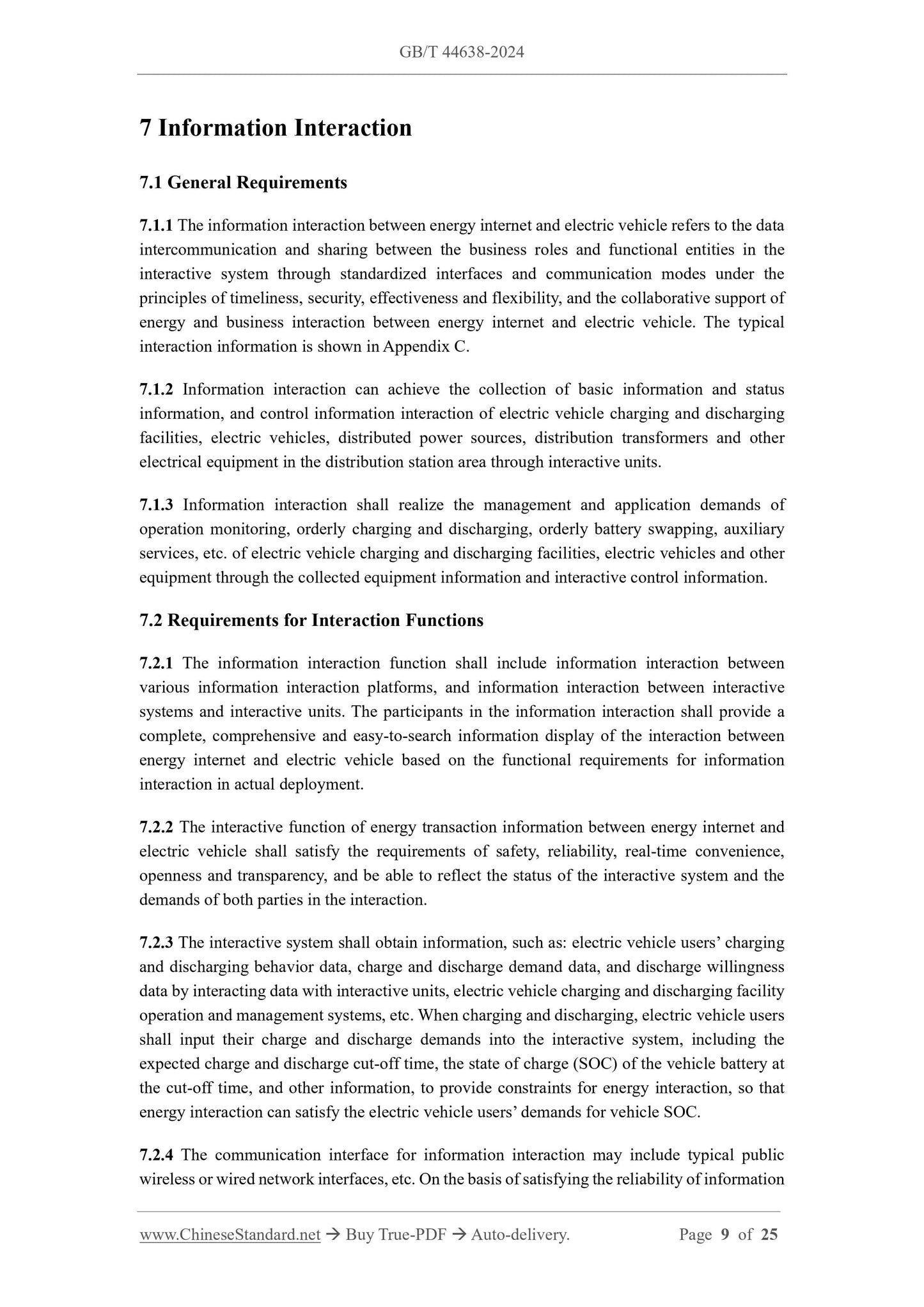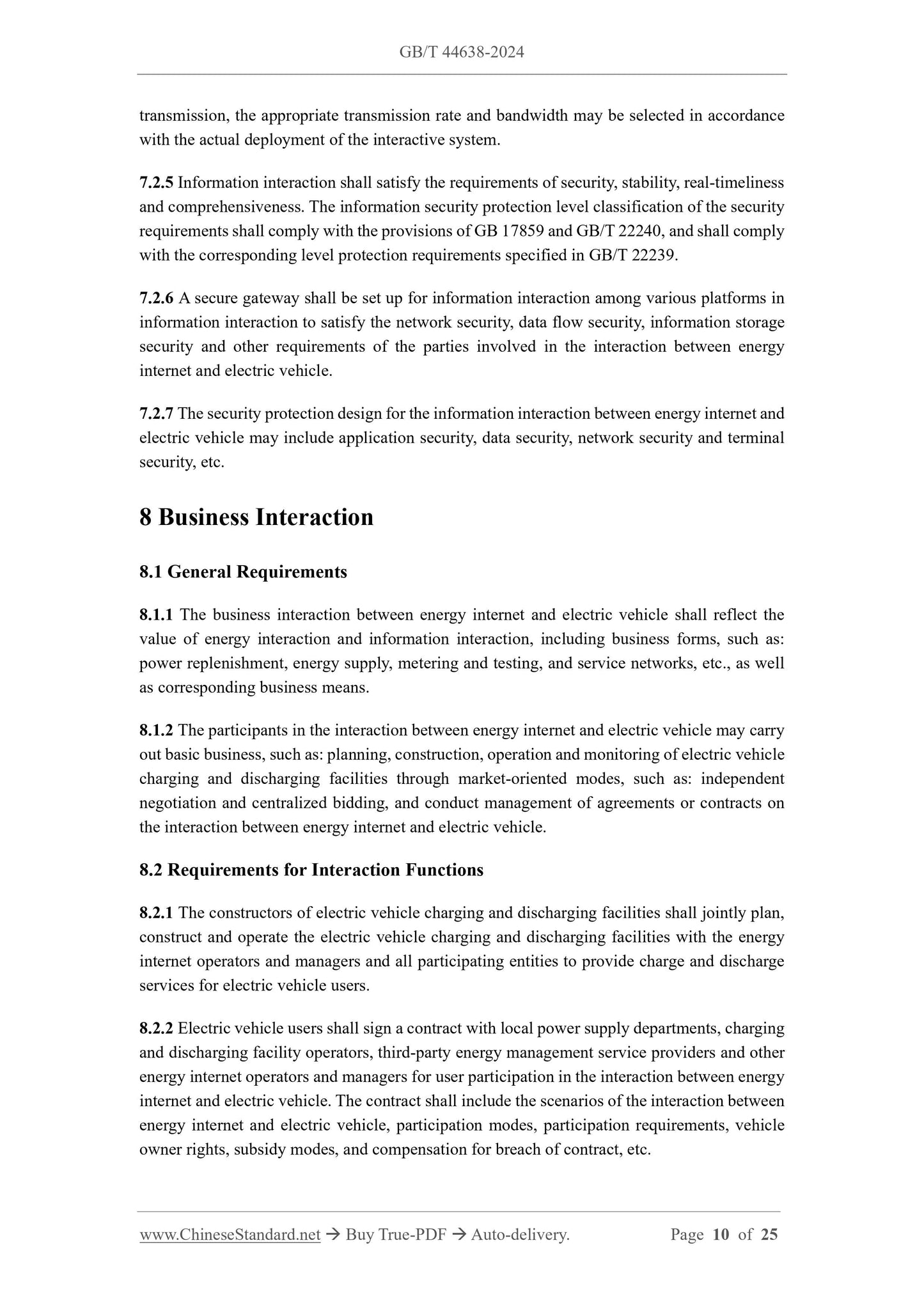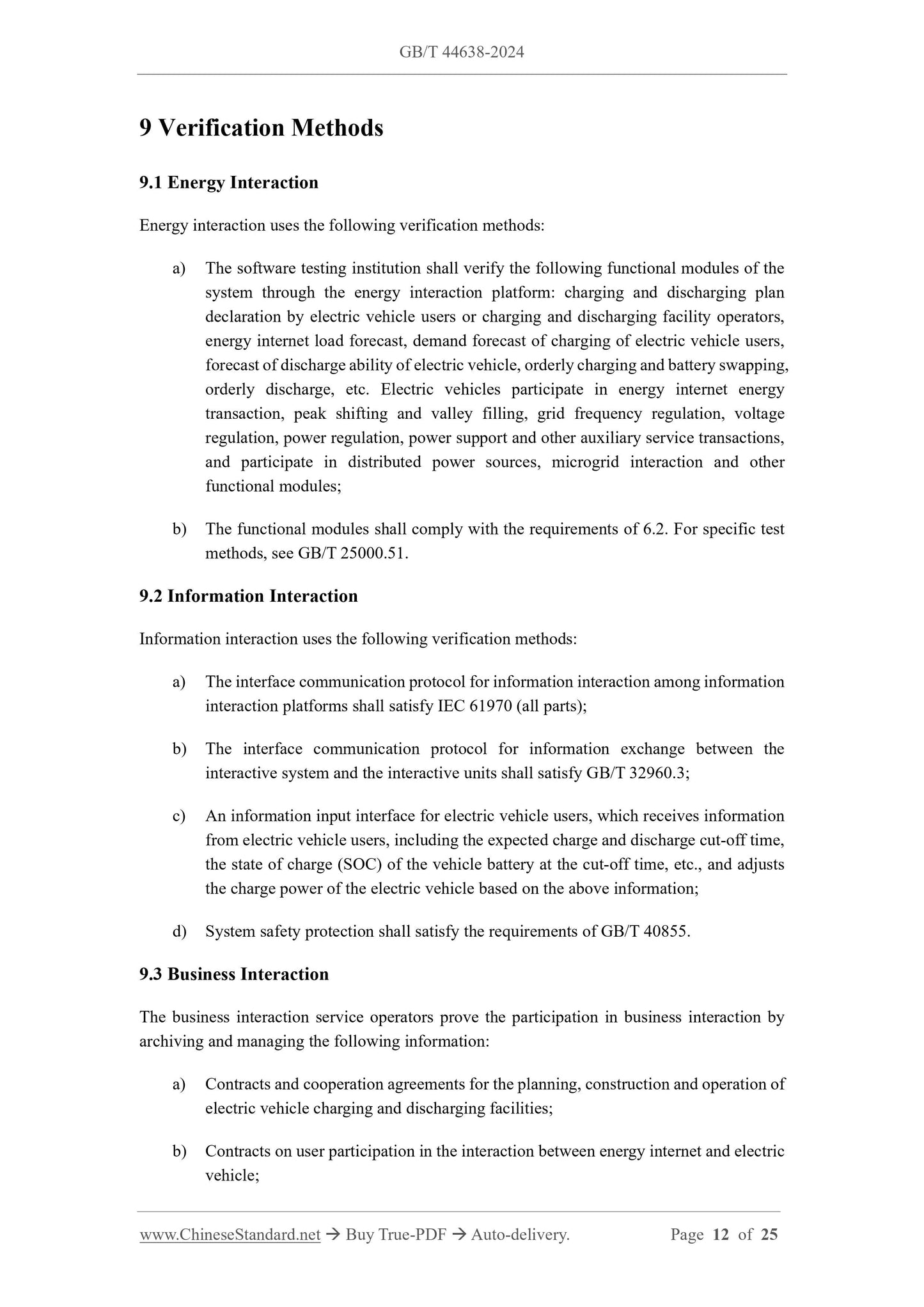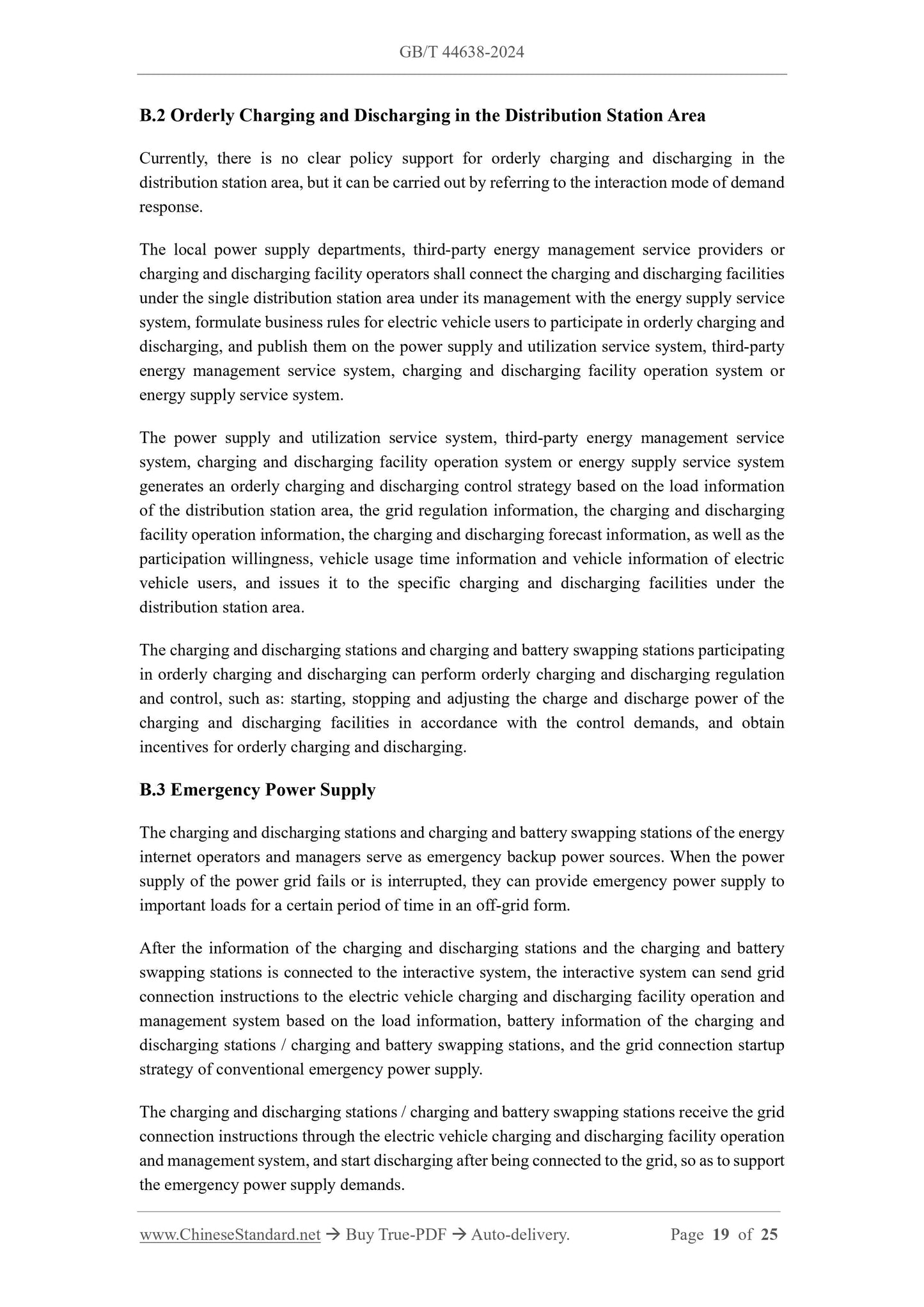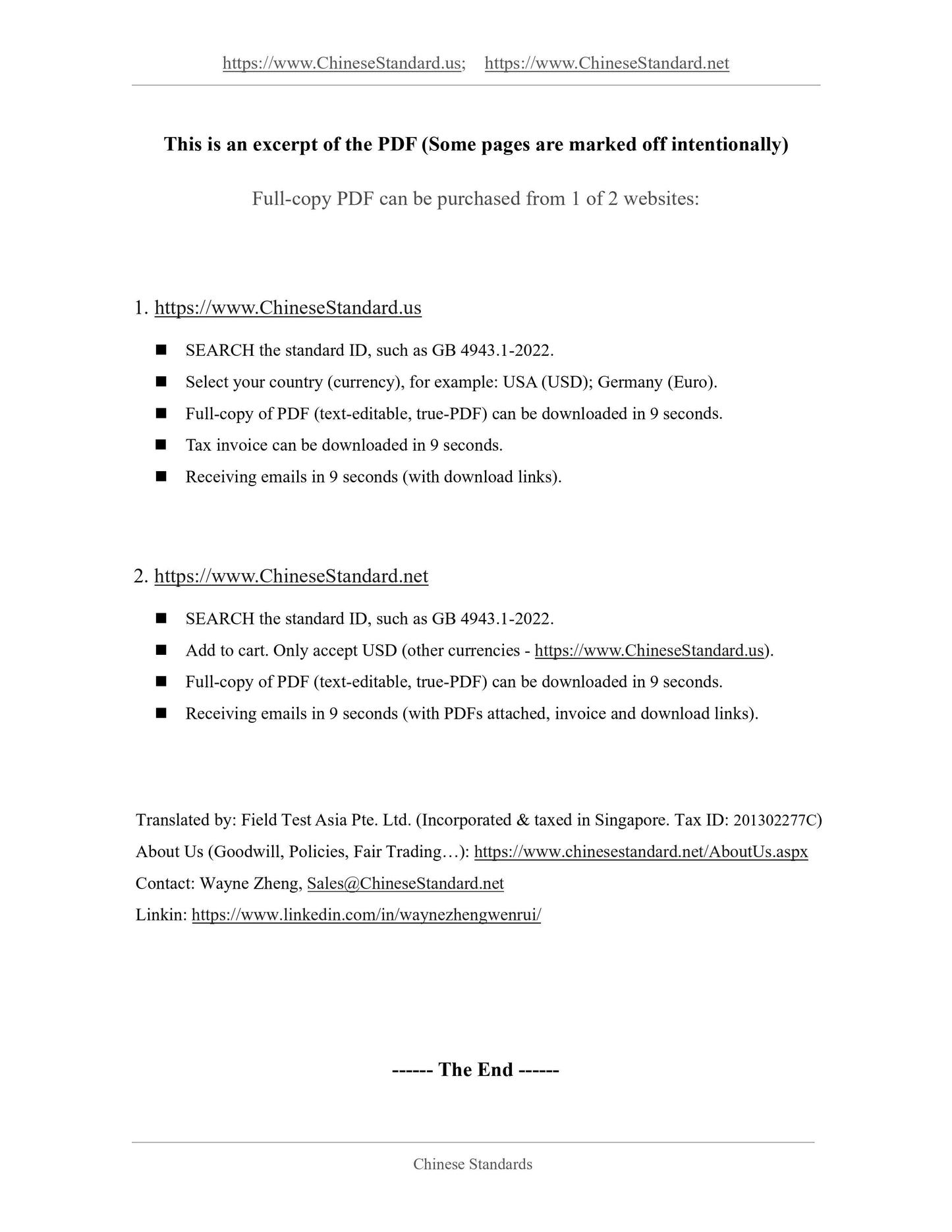1
/
of
10
www.ChineseStandard.us -- Field Test Asia Pte. Ltd.
GB/T 44638-2024 English PDF (GB/T44638-2024)
GB/T 44638-2024 English PDF (GB/T44638-2024)
Regular price
$275.00
Regular price
Sale price
$275.00
Unit price
/
per
Shipping calculated at checkout.
Couldn't load pickup availability
GB/T 44638-2024: Specification for interaction between energy internet and electric vehicle
Delivery: 9 seconds. Download (and Email) true-PDF + Invoice.Get Quotation: Click GB/T 44638-2024 (Self-service in 1-minute)
Newer / historical versions: GB/T 44638-2024
Preview True-PDF
Scope
This document specifies the general requirements, interaction requirements, energy interaction,information interaction, business interaction and verification methods for the interaction
between energy internet and electric vehicle.
This document is applicable to the planning, construction and operation of the interaction
between energy internet and electric vehicle.
Basic Data
| Standard ID | GB/T 44638-2024 (GB/T44638-2024) |
| Description (Translated English) | Specification for interaction between energy internet and electric vehicle |
| Sector / Industry | National Standard (Recommended) |
| Classification of Chinese Standard | F10 |
| Classification of International Standard | 29.240.01 |
| Word Count Estimation | 18,128 |
| Date of Issue | 2024-09-29 |
| Date of Implementation | 2025-04-01 |
| Issuing agency(ies) | State Administration for Market Regulation, China National Standardization Administration |
Share
